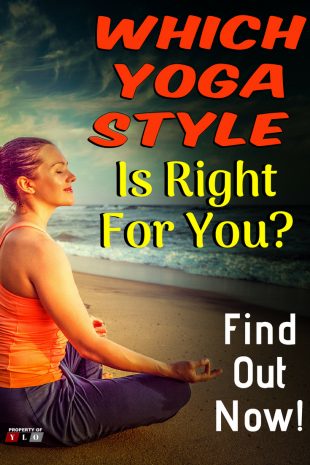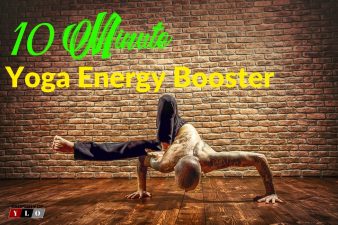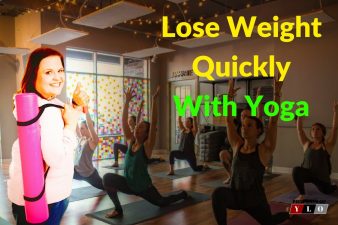From Bikram to Hatha, the right yoga styles can have a huge impact on your health. While yoga is a great way to lose weight, it also brings people inner strength and mental resilience.
You can practice it just to keep a regular routine going, to overcome sports injuries, or to develop your mental focus. Choosing the right yoga styles is a process that can keep you searching for more. Some recent trends in American yoga have been hot yoga and longevity yoga. There is more to yoga styles than getting lean or achieving great skin. The different yoga styles each have their own history and benefits, and each will help you achieve different types of fitness.
Today in America, yoga is used mainly for fitness, but there are different mental benefits unique to each of the yoga styles. Some yoga powers through each pose and teaches the practitioner calm. In other yoga practices, the poses are gentler, focusing on subtlety and balance. You can achieve different mental results with different yoga practices, so choose well as you search for the right yoga styles for you.
Some yoga contains chanting or meditation and serves as a way to channel spiritual and physical energies together. Let yourself try some different yoga classes before you make a decision, as you may or may not prefer a more spiritually focused class. The word yoga actually means to yoke spirit and body together in Indian, but Americans are more focused on the fitness aspect of yoga currently. So, you may need to seek out an Indian teacher or a more experienced guru in order to experience some enlightenment if you intend to achieve that in yoga.
Picking the right yoga styles isn’t all about getting thin or even becoming enlightened, though. You will find that the different exercise types in yoga are suited toward various types of energy as well as methods of releasing toxins and stress. You may find other health benefits to be present as well, such as flexibility and tendon strength. You can achieve these with careful practice in most types of yoga styles, and they are just a few of the reasons that yoga is loved by so many stars and even some professional football players. Check out some of the yoga styles below to discover more and find the right yoga for you.
Hatha Yoga Styles
Hatha yoga is usually a combination of a few yoga styles. This can mean different things for flexibility and muscle building. But perhaps more importantly, it can be hard to gauge the intensity of Hatha yoga classes unless you ask.
Definitely ask your Hatha yoga teacher where he or she was trained and about how intense the class is. Also ask about the quietness level, such as whether the class includes meditation or not.
You don’t want to end up in an advanced class if you are a beginner. But, you also don’t want to take on too much in another muscle type category if you are trained in one type of yoga at a higher level. For example, if you are training at a medium level in Vinyasa yoga and you find that the Hatha class you are thinking of taking contains shorter, more intense poses with only a few breaks at a medium level, it still could be too much.
Consider your own background with meditation and chanting as well to make sure that you will find the class compatible before you dive in.
Tibetan
Tibetan yoga styles incorporate tantric meditation and pranayama, or breath control. This style of yoga is little known in the West, and may not be easy to find classes in. There have been several books published on the subject in the West, though. A Tibetan monk has brought some modern Tibetan yoga to the West, called Kum Nye. This is an adaptation of ancient Tibetan poses which have been updated.
Kundalini
Brought to the West in 1969 by Yogi Bhajan, Kundalini yoga is based in the tantra yoga path. It used to be a secret yoga type that was only practiced by a few.
Yogi Bhajan believed that the West would benefit from the spiritual truths of this type of yoga even though the religious backgrounds are varied in the West.
This type of yoga talks about the truth of the people practicing it and works through the seven chakras. Its main focus is the energy at the base of the spine.
Ananda
Ananda yoga is based on bringing energy to the brain. Developed during the 1960s by Swami Kriyananda after he studied in California. This is one of the yoga styles for you if you are seeking more awareness. With a heavy emphasis on spinal alignment and gentle poses, this yoga focuses on aligning the body, mind, and energy. It works through the asanas with the intent of inner awareness and mental focus.
Ananda yoga is perfect for relaxation. It helps release inner tension while building a healthy body and focusing the mind.
Sivananda
Sivananda yoga was brought to the West in 1957 and is named after Swami Sivananda of India. His disciple, Swami Vishnu-devananda, built the International Sivananda Yoga Vidanta Centers. There are more than 80 of these worldwide, and there are also ashrams and teacher-training programs in the Sivananda tradition.
This is a more intellectual practice than some of the other yoga traditions. It addresses the question “Who am I?” for students and engages the heart, intellect, body, and mind. Sivananda sought to synthesize the various levels of human experience in his practical application of yoga. So, this yoga includes chanting, prayanama, and meditation over mental challenges, blocked energy, and stress.
The system taught at the centers includes meditation, diet (vegetarian), positive thinking, proper breathing, proper exercise, and proper relaxation. These centers are a cultural phenomenon in the West and were set out by Swami Vishnu-devananda during a time of cultural upheaval. They have provided some spiritual and physical guidance for followers since the time of their institution.
Bikram Yoga Styles
Bikram yoga is the right yoga for you if you like hot exercise or saunas. This is warm yoga at the least because it is intended to replicate the heat of India. Since yoga began in India this is considered part of the authenticity of Bikram yoga.
But there is more to recognizing India in the heated tradition of this yoga. The main reason for the high temperatures is to release toxins from the body. When the body is outside or inside, it can absorb toxins much like a sponge. The sweat releases the toxins and purifies the body’s internal organs as well as the skin. Much akin to wringing out a sponge, this heavy sweating allows new oxygen and blood into the body as it reboots the immune system.
Designed by Bikram Choudhury with a sequence of 26 poses, this yoga is perfect for the treatment of chronic diseases. In fact, Choudhury brought his yoga to the United States in 1971 on a sponsorship from the American Medical Association. On his trip, he demonstrated his use of yoga in treating illness and in bringing health to chronically ill patients outside of their treatment. He continues his work today in Los Angeles with students of all ages and fitness levels.
Viniyoga
T.K.V. Desikachar created this gentle yoga. Designed to help people ease through life transitions. This is the right yoga for you if you are experiencing life turbulence. But you can also take up this yoga practice if you are the type who recognizes that people are always evolving. Change can come to us quickly, causing stress, or it can sneak up on people as they go about their daily lives. This yoga integrates breathing and pose flow for a transformative and empowering practice.
Healing Yoga Styles
Healing yoga was designed by Joseph LePage, M.A. He founded Integrative Yoga Therapy (IYT) in San Francisco. His practice and the teacher training program he designed focuses on creating yoga that can be used in hospitals, clinics, and rehabilitation centers. These programs are designed to collaborate and integrate with mainstream wellness initiatives in modern hospitals and health centers.
Iyengar
Iyengar yoga is the most popular yoga in the United States. Practiced by many, this yoga is focused on longer poses. This long hold applies especially to standing poses. Chairs, belts, blocks, and blankets are common in this type of yoga, which places an emphasis on breathing deeply into the pose. In this type of yoga, you will also find that the wall is used often as a support prop. The idea behind the props is that a student can work up to more flexibility than they currently have by using support. Iyengar is demanding in its technical aspect, requiring that students pay close attention to alignment and precision.
Power Yoga Styles
Power Yoga is a book published by teacher Beryl Bender Birch, who teaches with her husband. It was published by Bender Birch in 1995 with the intent of challenging Americans’ understanding of yoga practice. The book is a practice based on Ashtanga yoga, which focuses on heat and flow. At the time, Bender Birch thought most people would not engage in a class titled Ashtanga yoga since they had no clue about that type of practice. She thought they would take a class aptly named Power Yoga, which works off of the same principles of a challenging and disciplined type of energy flow yoga. It has proven to be incredibly popular and is a staple in health clubs across the country. It focuses on flexibility, a strong fitness foundation, and staying on the move.
To find out if this is the right yoga for you, ask detailed questions of the instructor before taking a class. This is a challenging type of yoga that primarily builds strength.
Ashtanga
While Bender Birch didn’t think people would sign up for Ashtanga yoga in the U.S. in 1995, it is increasing in popularity today. The movement is based on the teachings of K. Pattabhi Jois, a past resident of Mysore, India. He was a yoga master who developed fast-paced Vinyasa poses for the Ashtanga style of yoga. This type of yoga was spread in the West by Jois and his yogis, and through their influence, it is one of the most popular today. Due to the very few Indians who came to the West to teach yoga in the 20th century, new yoga styles besides Hatha were limited in America. With Jois’ and his yogis’ teachings, there was life infused into the Western yoga tradition, which is why this form is so popular today.
This is a yoga type based off of six asanas. They start out less difficult and the student is allowed to work at their own pace through the increasingly difficult poses. There are no breaks, so come prepared for a good workout and lots of sweat. Instead of taking pauses, students are encouraged to breathe through each pose as they transition.




